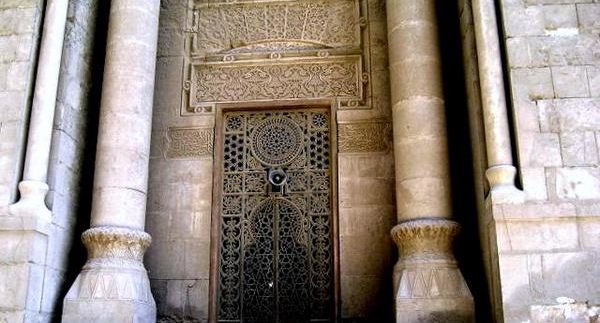Al Rifai Mosque: Cairo’s Islamic & Monarchical Past

Aly Gaballa
If you choose to walk down to the mosque from the Citadel, on Salah El Din Street, there is an enjoyable view of old Egyptian houses waiting to be appreciated; Sayeda Aisha Street will also lead you to the entrance gate. Upon entering the main gate that belongs to both Al Rifai and Sultan Hassan, you will need to pass through a metal detector.. The two mosques are separated by a relatively narrow pedestrian street and the huge structure of Al Rifai Mosque should come as no surprise seeing that its size, and its ability to compete with the neighbouring Sultan Hassan Mosque, had been of utmost importance.
After a short walk to the entrance of Al Rifai, a tall staircase leads you to a large doorway. To avoid confusion, and an overall awkward situation, be ready to remove your shoes; females should bring along a headscarf.
Similar to a lot of the 19th and 20th century’s prominent structures, Al Rifai has a clear Bahri Mamluk design. Once inside, one cannot help but notice the beautiful ceiling; gold was especially imported from Turkey for the gilding process at a price of 25,000LE, which at the time was a significant amount. Visitors should feel free to wander off inside this architectural wonder; we suggest you visit the burial places of Khedive Ismail and Reza Shah Pahlavi.
Once done with the viewing of the serene Islamic designs, feel free to run your hands across the shrine of Al Rifai – marked by green lights in a room at the centre of the mosque. You can even say a prayer or make a wish! We visited on a Friday morning so the mosque was quite empty; we were luckily able to rest our heads against the wall and take a quick and peaceful rest away from the outside heat. An area designated to females is also available in case they would also like to rest a while.
We also suggest you visit the ancient Sultan Hassan Mosque after you’ve finished with your visit to Al Rifai; as it is truly a part of the package and being so close in proximity, it is too convenient to pass up on.
The walk back on Salah El Din Street offers a number of ‘ahwas’, or coffee shops, one can rest and reflect in. A cup of Egyptian mint tea will surely get you back on your feet ready to explore more of the area.
recommended
 Restaurants
Restaurants
Cairo's Ramen Revival: 5 Must-Try Bowls Around the City
 Cafés
Cafés



